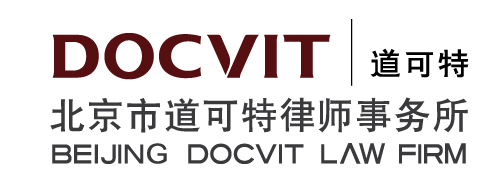The Patent Law, which came into effect on 1 June 2021, is the first legal regulation in China to establish a “drug patent linkage system”. According to article 76 of the law, the People’s Court or the National Intellectual Property Administration (NIPA) shall help settle disputes over patent rights arising from drugs applied for registration, while the National Medical Products Administration (NMPA) and NIPA shall jointly formulate specific resolutions for disputes over patent rights at the application and approval stages of marketing authorisation for pharmaceutical products.

Senior Partner
DOCVIT Law Firm
As a result, on 4 and 5 July 2021, the NMPA, NIPA and Supreme People’s Court successively issued the Implementation Measures for the Mechanism for Early Settlement of Drug Patent Disputes (for Trial Implementation); the Administrative Adjudication Measures for Early Resolution Mechanisms for Drug Patent Disputes; and the Provisions of the Supreme People’s Court on Several Issues on the Application of Law for Hearing Civil Cases of Patent Right Disputes Relating to Medicines Applied for Registration.
This article analyses the patent dispute case of the sitagliptin/metformin tablet recently concluded at the NIPA and Beijing Intellectual Property Court (BIPC), respectively, as an example of applying the estoppel and dedication rules in patent infringement determination.
FACTS OF THE CASE
In relation to the patent in question – titled “pharmaceutical compositions of combinations of dipeptidyl peptidase-4 inhibitors with metformin” – Merck Sharp & Dohme, the patentee, registered it as the originator drug named Selegiline Metformin (II), and relevant claims, on the Patent Information Registration Platform for Listed Drugs in China (PIRPAD) for authorisation.
Qilu Pharmaceutical, the generic drug manufacturer, stated that its generic drug in dispute was under category 4.2 of the patent declaration status, meaning that generic drugs did not fall into the scope of protection of patent rights related to originator drugs included on the PIRPAD.
Claim 1 of the patent in question protects “a pharmaceutical composition comprising:
(a) 3 to 20% by weight of sitagliptin, or a pharmaceutically acceptable salt thereof;
(b) 25 to 94% by weight of metformin hydrochloride;
(c) 0.1 to 10% by weight of a lubricant;
(d) 0 to 35% by weight of a binding agent; and
(e) 0.5% by weight of a surfactant.”
One of the disputes in this case was whether the estoppel and dedication rules should be applied to determine infringement when the patentee reduced the weight of the surfactant in claim 1 to a specific endpoint value of 0.5%, stating that the technical feature was “particularly useful” for solving technical problems of the patent at the grant stage.
THE RULING
The BIPC held that both the estoppel rule and the doctrine of equivalents should be applied to the patent, with the following core view:

Senior Partner
DOCVIT Law Firm
Applying estoppel rule. From the perspective of certainty of the value and characteristics of the value range, the specification recorded a larger value range of 0 to 3% of the surfactant. At the grant stage, the patentee had also been given the opportunity to comprehensively protect the present patent through reasonable generalisation, as the specification did.
However, the patentee did not require a larger protection range, but directly reduced the surfactant to the 0.5% point value in the embodiment of the patent, with a statement in response to the second examination opinion notice emphasising that “the addition of 0.5% by weight of a surfactant to the formulation is particularly useful for solving the above technical problem”.
Therefore, based on the estoppel rule, other weights of surfactant than 0.5% were abandoned by the patentee through amending the claim and making a relevant statement, sufficient to convince the patent examiner and public that the patentee truly intended to protect the technical solution containing 0.5% by weight of a surfactant.
To protect the public’s right to reasonably rely on the certainty of numerical value and range of values, other technical solutions should not be included in the scope of protection of the claims, per the doctrine of equivalents.
Applying dedication rule. The dedication and estoppel rules do not address the same facts and are not exclusive in their application to the same case. Therefore, even if this case adopted the conclusion based on the estoppel rule, it is still essential to assess whether the dedication rule should be applied.
Given that the specification described the technical solutions containing 0 to 3% by weight of a surfactant – while the final authorised claim 1 was limited to “0.5% by weight of a surfactant” – as a result, except for the technical solution containing 0.5% surfactant, the other technical solutions are only described in the specification, instead of in the claim, which should be determined to be dedicated to the public per the dedication rule.
Based on this ruling, both the NIPA and BIPC confirmed that the technical solution of the generic drug did not fall within the scope of protection of the patentee’s claims.
KEY TAKEAWAYS

In drug patent infringement cases, the estoppel and dedication rules (as limiting rules to the doctrine of equivalents) regulate patentees’ assertions for their claims to avoid the possibility of them gaining undue advantages by making a claim that contradicts the original one, to the detriment of public welfare.
These rulings again prove the dedication and estoppel rules are not mutually exclusive in the same case, as they address different facts.
Therefore, in patent linkage cases, both original and generic drug manufacturers should pay attention to the estoppel and dedication rules, to better judge application of the doctrine of equivalence.
Liu Yuanxia and Zhang Bingnan are Senior Partners at DOCVIT Law Firm

DOCVIT Law Firm
56/F Fortune Financial Center
No.5 East Third Ring MiddleRoad
Beijing 100020, China
Tel: +86 10 8586 1018
Fax: +86 10 8586 3605-8006
Email: liuyuanxia@dtlawyers.com.cn
zhangbingnan@dtlawyers.com.cn





















